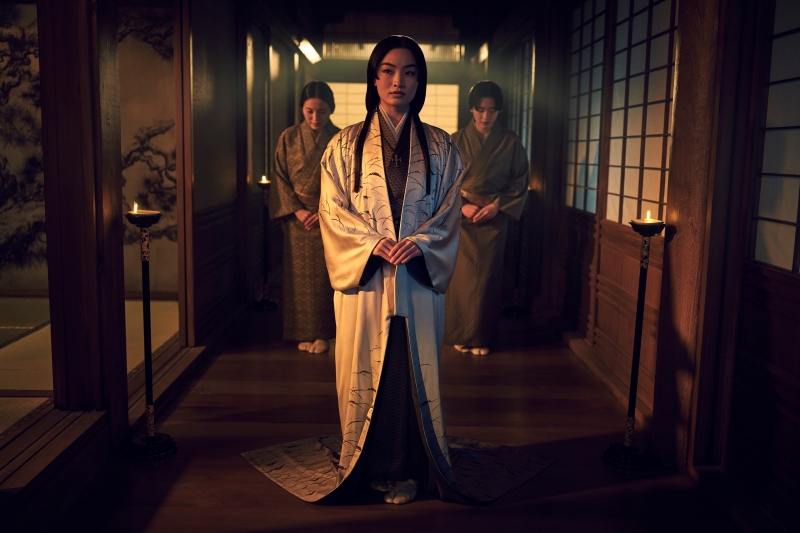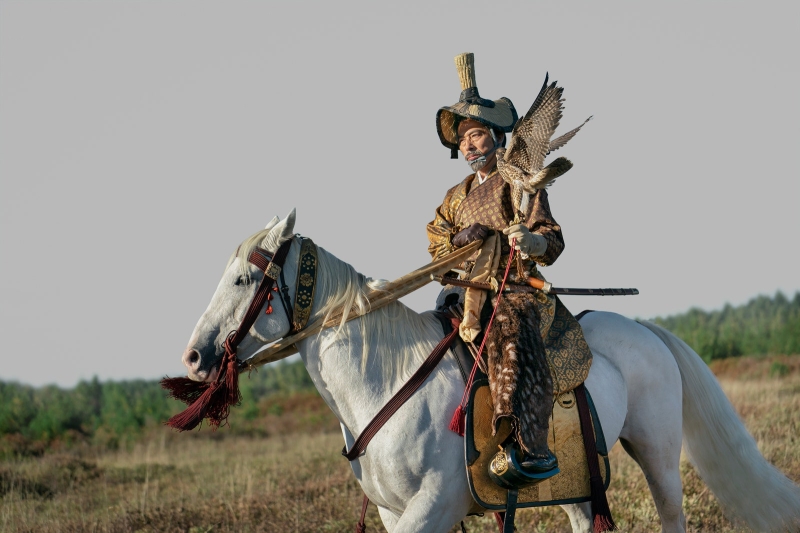
When Carlos Rosario was first approached about costuming the FX show Shōgun, he was hesitant. He much preferred working on feature films, which, to him, present a narrative structure that’s more clear. But it was his parents—who fondly remembered the 1980s iteration of Shōgun—who changed his mind. Ultimately, Rosario decided he didn’t want to revisit the ’80s interpretation of the James Clavell novel. In fact, he didn’t want to revisit any Japanese films or TV at all.
“I knew that for this one, we needed to start from scratch,” he says. “It was important for me to go straight to the source, so we studied and dissected paintings from that period.” For Rosario, the paintings from 1600s Japan were his main source of inspiration. “At the end of the day, the paintings really represent the essence of the period without any filters. That's why I didn’t focus on Japanese movies of that period, because that's the vision of the director,” Rosario adds.
To prepare for his interview to costume the show, Rosario created a detailed, 125-slide research deck, which he whittled down to 30. (“That was post pandemic—I needed to put my energy into something,” he says.) While that served as the base, he reached out to experts to help him fashion a historically accurate feudal Japan. “I was in touch with historians and experts that guided me throughout the project to be as accurate as possible,” he says. “We were mostly in touch with a historian that is a teacher in the University of Kyoto, and he’s the one that really gave us guidance from the beginning to the end.” From there, he oversaw a workshop of over 125 people that spanned five countries—Japan, Canada, the US, Thailand, and China—to create the series’s 2,300-plus costumes.

Not only did Rosario have to learn the culture of feudal Japan, he had to become familiar with what he refers to as the “language of the costumes.” He explains: “For example, the higher rank you are, the more layers you have for the noble ladies. The higher rank you are for the noble man, the more hakama pleats you have,” he says. Understanding what materials were reserved for the ruling classes was also important. “Cotton was a fabric that was very rare at that period, so I only made cotton tabis for the Taiko, Lady Ochiba, and the Prince,” he says. “That was my way of saying only the most wealthy people in Osaka could afford cotton.” Inside the walls of the Osaka Castle, simply having shoes points to status. “The Lords [on the Council of Regents] had custom-made deerskin tabis while everybody else inside the castle were bare feet,” he says.
Tabis have come back into a more international public consciousness thanks to Maison Margiela’s design. But the shoe was a mainstay in Japanese culture dating back to the Shōgun era. Townspeople, soldiers, and bureaucrats alike all wear the split-toe shoe. But it was also one piece where Rosario had to divert from the historical model, in order to preserve the actors’ safety. “Nobody would wear tabis outdoors,” he says. “But obviously we are in modern times working with actors, so we wanted to keep them safe.”
One harrowing scene in the pilot shows Kashigi Yabushige (Tadanobu Asano) struggle to climb down a precarious rock formation in order to rescue his Portuguese navigator. Many viewers surely couldn’t help but stress as Yabushige’s straw tabis struggled to grip onto the unforgiving terrain. But Rosario has a secret: they were rubber. Shōgun was filmed in Vancouver during the wintertime, so Rosario had to find a way to make durable shoes that would hold up against the inclement Canadian weather.

One key step for Rosario was using the costumes as a clarifying tool. The show, with dialogue almost entirely in Japanese, is filled with scores of characters and existing lore. Rosario felt it best to give each of the five lords on the Council of Regents their own color palette to help viewers distinguish allegiances. “There are so many characters. I wanted to make sure that, by creating approachable costumes, the audience would relate to the characters,” Rosario says. (For example, Toranaga’s faction is outfitted in yellow, gold, and copper tones, while his rival Lord Ishido is in silver, and Lord Kiyama is in red.)
But the Shōgun costumes went beyond the challenge of understanding the historical period. Rosario was just as concerned with each character’s internal journey throughout the season. “My task as a costume designer is to read the 10 scripts and to really understand the emotional arc of each one of these characters, because I know that their costumes need to be in alignment,” he says. “They need to reflect that emotional journey that they’re going through.”
The most difficult character for Rosario to dress was Lady Mariko (Anna Sawai), a member of Lord Torinaga’s faction who acts as John Blackthorne’s (Cosmo Jarvis) translator. A character with a tragic past, Rosario says that in the beginning of the series, Mariko was closed off and icy. “When we meet her in the beginning, she’s lifeless, so I wanted her costumes to reflect that. It became very monochromatic. I wanted winter to be represented through her clothes,” he says. “You have all these graphics, these patterns of snow covering the grass of branches without leaves. That was my way of telling the audience, here is a character that walks in life without purpose, without intention, and slowly as she finds her power, as she finds her purpose, you can see that the camellias are blooming in her costume.”

